Thinking about SoftWave Therapy Before and After results? This treatment uses sound waves to help your body heal naturally. Many people wonder what the results look like and if it really makes a difference. We’ll explore what happens before and after SoftWave Therapy, showcasing real changes people have experienced. It’s all about seeing how this innovative treatment supports pain relief and recovery.
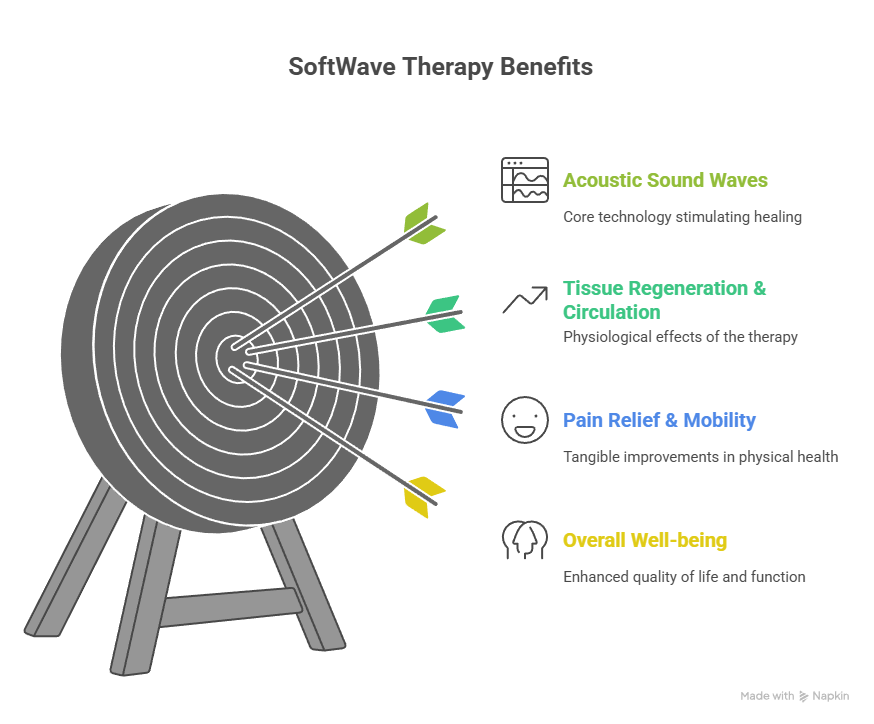
Key Takeaways
- SoftWave therapy uses acoustic sound waves to encourage the body’s natural healing processes, aiming to reduce pain and improve recovery.
- Visible improvements in pain relief, mobility, and overall well-being are often reported by patients undergoing SoftWave therapy.
- The treatment stimulates tissue regeneration and circulation, leading to noticeable changes in how people feel and function after sessions.
Understanding SoftWave Therapy Before and After: How the Healing Process Works
SoftWave therapy is a pretty interesting approach to healing, and understanding how it works is key to appreciating the results people see. It’s not magic, but it does use a specific kind of energy to get your body to do some pretty neat things.
At its core, SoftWave therapy uses ultrasound waves. These aren’t the kind used for imaging; instead, they’re designed to reach deeper into the body’s tissues. When these waves hit, they create a controlled micro-injury. Now, that might sound a bit scary, but it’s actually the trigger for the healing process. Your body naturally responds to this by sending more blood flow to the area and kicking off the production of new cells and collagen. Think of it like a gentle nudge that tells your body, “Hey, something needs attention here!” This increased blood flow brings in nutrients and oxygen, which are super important for repair.
Here’s a simplified look at the SoftWave therapy healing process:
- Energy Delivery: The SoftWave device emits ultrasound waves that penetrate the skin and reach the target tissue.
- Cellular Response: These waves cause tiny, controlled disruptions in the cells.
- Inflammatory Response: The body’s natural healing mechanisms are activated, bringing more blood to the area.
- Regeneration: New cells, including collagen and elastin, are produced to repair the tissue.
- Improved Function: Over time, this leads to stronger, healthier tissue and reduced pain or improved appearance.
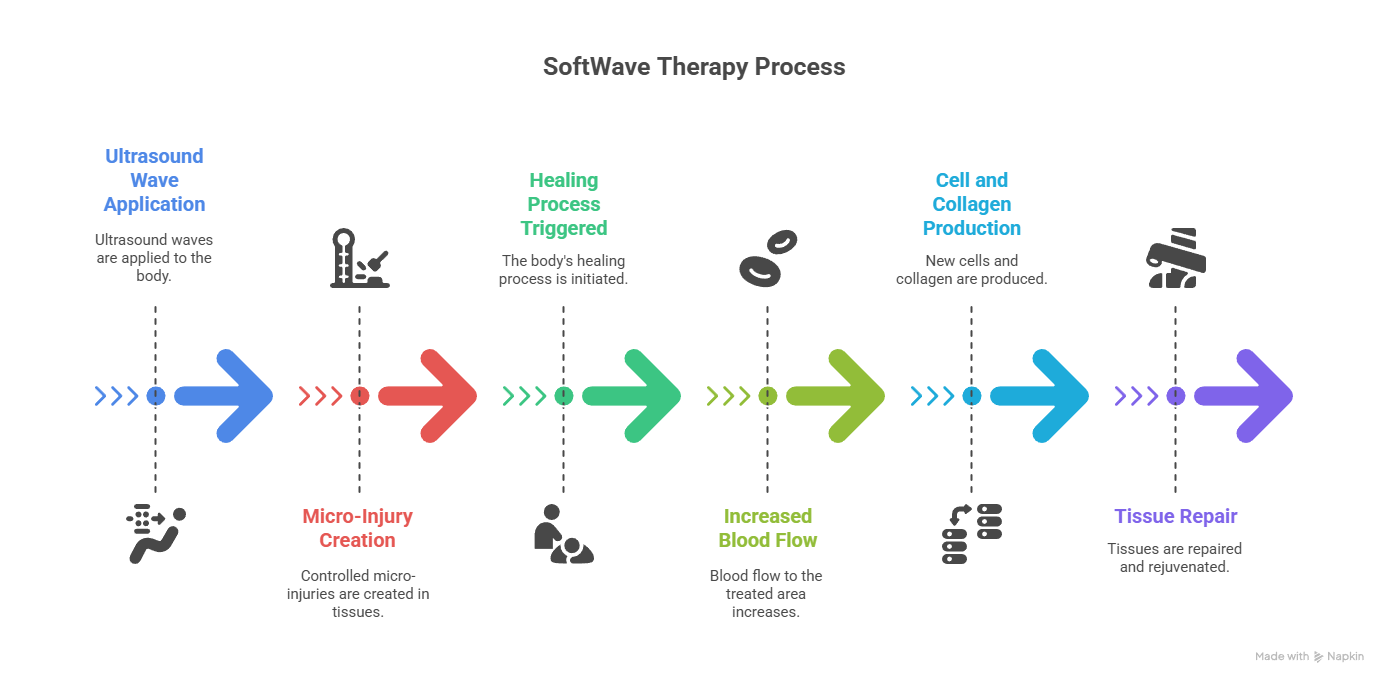
The real magic happens in the weeks and months following treatment as your body continues this regenerative work. It’s a gradual process, not an instant fix, which is why consistency and patience are important.
The goal is to stimulate your body’s own ability to heal and regenerate. It’s about working with your natural biological processes rather than against them. This means the results are often very natural-looking and feel like a true improvement from within.
SoftWave Therapy Before and After: Real Results You Can See and Feel
When people consider SoftWave therapy, they often want to know what kind of changes they can expect. It’s not just about what the technology does under the skin; it’s about the visible and tangible differences that show up afterward. Many individuals report feeling a significant improvement in the treated areas, less pain with greater range of motion. This is the result of the body’s natural healing processes being stimulated.
Think about common concerns like knee pain, shoulder pain, back and neck pain. SoftWave therapy targets these areas by encouraging your body to produce more collagen, which is what gives your joints its structure and elasticity. Over time, this leads to better joint mobility. The real magic happens as your body continues to repair and regenerate, with results often improving for several months post-treatment.
It’s important to remember that results can vary from person to person. Factors like age, skin condition, and lifestyle all play a role. However, the consistent feedback points to a positive and noticeable change. For instance, some patients have reported a significant reduction in inflammation and observed positive changes after a series of treatments, like one patient who noted a difference in their lower back after nine sessions [bcf5].
The process works by sending acoustic sound waves deep into the skin, creating tiny thermal zones. This controlled injury signals the body to kickstart its natural healing response, bringing fresh collagen and elastin to the surface. It’s a way to work with your body’s own capabilities to achieve regeneration.
While individual experiences differ, the overall trend shows that SoftWave therapy can lead to visible improvements that patients can both see and feel, contributing to a greater sense of confidence and well-being.
Comparing SoftWave Therapy Before and After: Key Recovery Outcomes
When we look at SoftWave therapy, the “before and after” picture isn’t just about how things look, but also how they feel and function. It’s about getting back to feeling like yourself, often faster than you might expect.
One of the most talked-about aspects is the reduction in pain. Many people turn to SoftWave because they’re dealing with chronic discomfort that hasn’t responded well to other treatments. After a series of sessions, patients frequently report a significant decrease in their pain levels. This isn’t just a minor improvement; for some, it means being able to do daily activities they previously couldn’t.
Beyond pain relief, there’s a noticeable boost in mobility and function. Think about someone who has been struggling with a stiff shoulder or a sore knee. SoftWave therapy works by stimulating the body’s natural healing processes, which can help repair damaged tissues.
This often translates to:
- Increased range of motion in affected joints.
- Reduced stiffness, especially noticeable in the morning or after periods of rest.
- Improved ability to perform physical activities, from walking to more strenuous exercise.
- A general sense of feeling more “put together” and less limited by physical ailments.
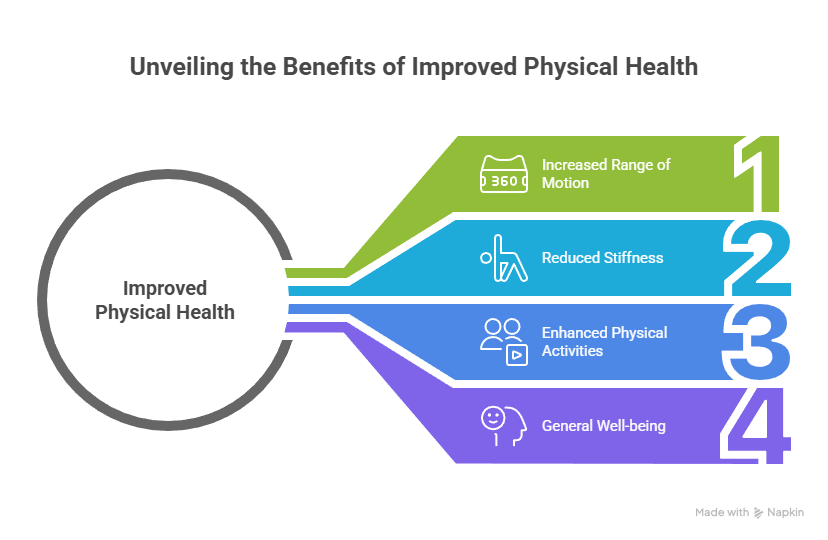
It’s also worth noting the impact on inflammation. SoftWave’s ultrasound energy can help reduce swelling and inflammation in the treated areas. This is a big deal because inflammation is often at the root of much of the discomfort people experience.
The body has an incredible capacity to heal itself. SoftWave therapy acts as a catalyst, encouraging these natural regenerative processes to kick into high gear. It’s less about forcing a change and more about supporting what the body is already trying to do, just perhaps at a slower pace than we’d like.
Comparing the outcomes, you’ll often see a pattern of progressive improvement. While some feel better after just a few sessions, the full benefits tend to unfold over weeks and months as the body continues to repair and rebuild. This sustained improvement is a key differentiator. For instance, a patient might notice they can sleep more comfortably on their side after just a few treatments, a significant change that impacts their overall well-being. The journey from “before” to “after” is often one of gradual but meaningful recovery, leading to a better quality of life.
SoftWave Therapy Before and After: Inside the Regenerative Results
When we talk about SoftWave therapy results, we’re really talking about your body’s own ability to heal itself, just supercharged. This isn’t about putting something foreign into your system; it’s about waking up the cells that are already there and telling them to get to work. The technology uses acoustic sound waves, which sound fancy, but think of it like a gentle, targeted nudge. These waves penetrate the skin and reach down to the deeper layers where collagen and elastin live.
The core idea is to stimulate new collagen production, which is what gives your joints flexibility and elasticity. Over time, as this new collagen forms, you start to see improvements. It’s not an overnight fix, and that’s actually a good thing. It means the changes are natural and sustainable. The process is designed to kickstart a regenerative response, helping your body repair itself from within. This is why many people experience what we call SoftWave regenerative therapy results – a noticeable improvement in
Here’s a simplified look at what happens:
- Stimulation: An acoustic sound wave, sends energy that is delivered deeply (12 inches) into the joint. Going through the skin to the dermis, to the collagen and joint level. Response: This energy signals your cells to produce more collagen and elastin.
- Regeneration: Over weeks and months, new, healthy tissue begins to form.
- Visible Change: Skin becomes firmer, joints become more elastic and flexible.
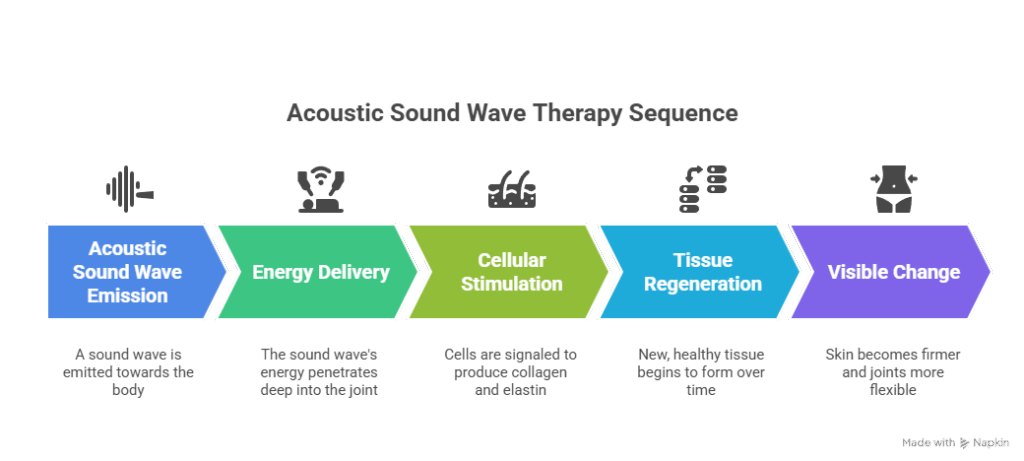
It’s pretty amazing when you think about it. Your body does the heavy lifting, and SoftWave therapy just provides the right conditions for it to happen more effectively. This approach is why SoftWave therapy recovery outcomes are often so positive, with minimal to no downtime needed. You can get back to your day right after a session, and the healing continues quietly in the background. For those looking for a way to address signs of aging or certain types of discomfort, understanding this internal regenerative process is key to appreciating the full impact of the treatment. You can learn more about the regenerative journey and how it unfolds over time.
Does SoftWave Therapy Really Work? See the Proof Before and After
So, you’re wondering, “Does SoftWave therapy really work?” It’s a fair question, and honestly, seeing is believing. We’ve all seen those dramatic before-and-after photos online, but what’s really going on under the surface? SoftWave uses acoustic sound waves, delivered deep into the joints, to get your body to make more collagen. Think of it like giving your skin a nudge to rebuild itself.
Here’s a quick look at what patients often report:
- Reduced pain and inflammation
- Increased range of motion and better flexibility
- Improved overall skin tone
- Stimulation of your own bodies stem cells after 45 minutes of treatment.
It’s important to remember that results can vary from person to person. Factors like age, skin condition, and lifestyle all play a role. However, the technology is designed to stimulate your body’s natural healing processes, which is why many find it effective for achieving increased range of motion and decreased pain and discomfort.
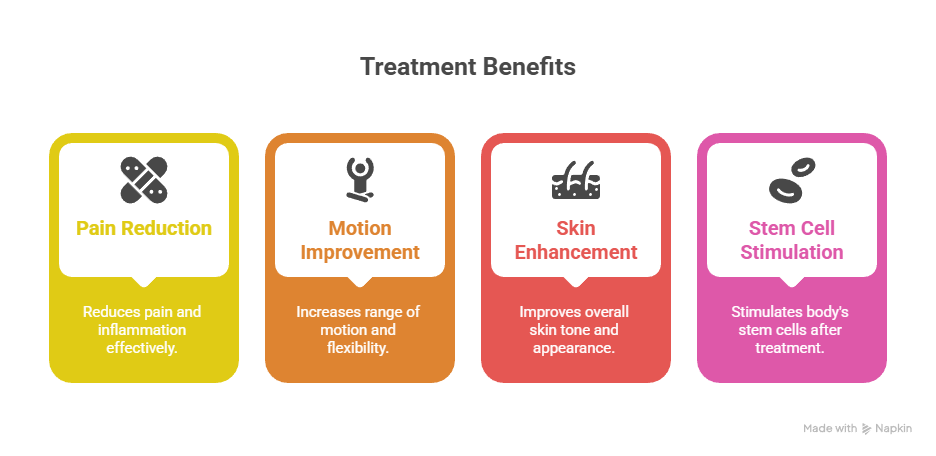
The technology targets affected areas including the joints, stimulating collagen production without affecting the skin’s surface. This means you can get back to your day right after treatment, with no real downtime to worry about.
It’s not an overnight fix, but a process that helps your body rejuvenate. For many, it’s a welcome alternative to more invasive procedures.
Curious if SoftWave Therapy actually works? We’ve gathered real results to show you the difference it can make. See for yourself how patients have improved before and after treatment. Ready to explore how SoftWave could help you? Visit our website to learn more and book your appointment today!
Wrapping Up: What SoftWave Therapy Means for You
So, we’ve looked at what SoftWave Therapy can do. It seems like a pretty straightforward way to help with pain and inflammation using acoustic sound waves to get your body to heal itself. People are seeing real changes, whether it’s feeling better or looking a bit younger. It’s not magic, but it’s a modern approach that’s helping a lot of folks get back to feeling more like themselves. If you’re dealing with ongoing discomfort or skin concerns, it might be worth looking into what this treatment could offer.
Frequently Asked Questions

What exactly happens during SoftWave therapy?
SoftWave therapy uses special sound waves, kind of like focused sound, to encourage your body to heal itself. It reaches deep into the body to help your body regenerate this treatment also performs angiogenesis which is the formation of new capillaries. This process allows the body to heal and regenerate quickly.
How quickly can I expect to see changes after SoftWave treatment?
Most patients notice a difference right after the first treatment.
Is SoftWave therapy safe for everyone?
Yes, SoftWave therapy is considered very safe. It’s approved by the FDA, and it works for all skin types. Since it doesn’t involve needles or surgery, there’s usually no downtime needed, meaning you can get back to your normal day right away. Some mild redness might happen, but it goes away quickly.
If you have any additional questions or if you would like to see if Softwave therapy is right for you, please contact us at 813-906-0477.

